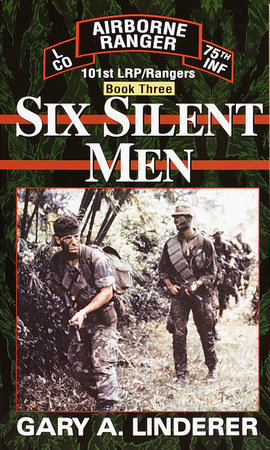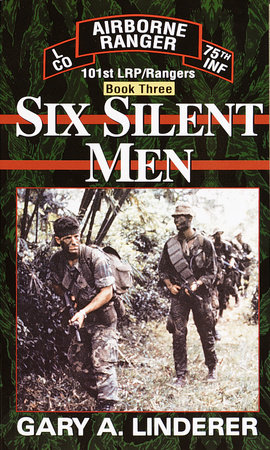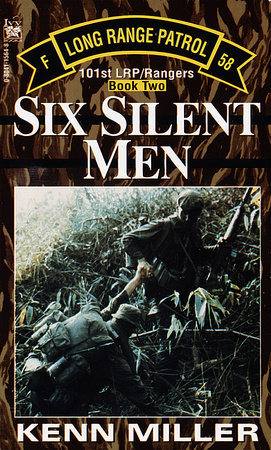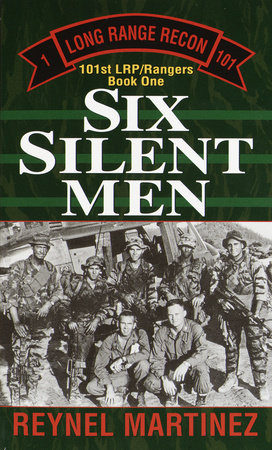Excerpt
Six Silent Men...Book Three
On February 1, 1969, thirteen Long Range Patrol (LRP) and Long Range Reconnaissance Patrol (LRRP) companies and detachments serving throughout the Republic of South Vietnam were summarily deactivated by the Department of the Army. Simultaneously, the Department of the Army activated the first thirteen letter companies of the 75th Infantry Regiment (Ranger). There was no fanfare, no parades, no physical transfer of unit personnel, no change of command, no relocation, no turn-in or reissuance of weapons, gear, and equipment, and no additional training. It was little more than a paper transaction conducted under the auspices of military protocol that affected only unit designation, unit heritage, and the exchange of one unauthorized shoulder scroll for another.
The units affected were small groups of volunteers, most between the ages of eighteen and twenty-one. But they were warriors who prosecuted their war deep behind enemy lines. They fought the NVA and VC on his own turf, bringing the war to the enemy. In their limited numbers they searched out and hunted the enemy in his sanctuaries. And when they found him, they brought the wrath of God and the U.S. military down on his head.
They had little formal training for what they did, most of them learning their stock-in-trade as they went. Those who learned quickly survived and passed their knowledge and experience on to others. Those who learned slowly were usually weeded out before they managed to get themselves and their teammates killed.
The Lurps saw this organizational metamorphosis from “LRP” to “Rangers” as just another confusing example of Pentagon politics at its finest. It didn’t affect them individually or as a unit. Their mission remained the same—to locate the enemy on his own playing field and make certain that he paid the full price of admission into the war he had created. And at this they excelled.
The VC and NVA soon learned that they, too, were fighting a war with no rear areas, no secure havens, no safe houses, no place where death and destruction could not seek them out and destroy them. They were being given a taste of their own brand of warfare by these small teams of Americans they soon came to call “the men with painted faces.” It was a name that struck fear into the hearts and souls of the best troops the enemy sent to the field.
Up and down the length of South Vietnam, four- to six-man American Long Range Patrols prowled the vast expanses of enemy-controlled territory, exposing troop concentrations, base camps, hospitals, and weapons and supply caches. And when the enemy forces went on the offensive or infiltrated new units into South Vietnam, it was the U.S. Long Range Reconnaissance Patrols that waited to welcome them with deadly ambushes, devastating air strikes, and thundering artillery barrages.
F Company, 58th Infantry (LRP), 101st Airborne Division was one of the Long Range Patrol companies forced to undergo this strange mutation. The company had arrived in South Vietnam in November 1967. Activated at Fort Campbell, Kentucky, just prior to the division’s deployment to Southeast Asia, the Long Range Reconnaissance company as a unit was inexperienced and untested in combat. But the swamps, jungles, mountains, and valleys of South Vietnam would soon become its proving ground.
In the fifteen months of its brief existence, the Long Range Patrol company would go through an extended metamorphosis of its own—sometimes satisfying, sometimes painful. Arriving in Vietnam without an organic unit history with the division, the Long Range Patrollers soon found themselves the “butt boys” of Division Headquarters. They were frequently utilized as a special assignment element and given every odd job in the division that other units could not or would not perform. They pulled perimeter security at the division rear. They rode shotgun for a Screaming Eagle general during his post-Tet ’68 quest through I Corps in search of a choice piece of real estate on which to construct a new home for the division. They conducted numerous short-notice infantry sweeps in search of enemy raiders, sappers, and saboteurs.
Sandwiched between those too frequent attempts by higher command to keep the “troublesome malcontents” busy, the Lurp company begged, borrowed, and stole whatever Long Range Patrol missions it could get its hands on. And by trick or treat, trial and error, F Company, 58th Infantry (LRP) managed to add to the legacy established by its predecessor, the legendary LRRP detachment of the 1st Brigade, 101st Airborne Division.
Then, on February 1, 1969, the story of the Long Range Patrollers of F Company, 58th Infantry (LRP) came to an ignoble end. With the sudden deactivation of all Long Range Patrol companies in Vietnam, and the simultaneous activation of “lettered” Ranger companies, F Company, 58th Infantry (LRP) ceased to exist. However, its members soon rose Phoenixlike from the ashes to man the rolls of L Company, 75th Infantry (Ranger), and so began the final chapter of their long and glorious odyssey in the Vietnam War. During seven bloody years of loyal and unselfish service as the “Eyes and Ears of the Screaming Eagles,” the Long Range Patrollers built a legacy that glorifies the division to this day.
This is the final chapter—this is their story.







